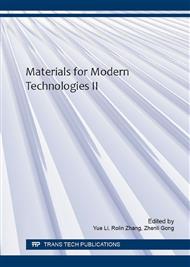p.90
p.96
p.104
p.111
p.118
p.127
p.134
p.140
p.146
Analysis of the Influence Factors on High Compressibility Water Atomized Iron Powder
Abstract:
In this paper, the influence factors on high compressibility water atomized iron powder LAP100.29 were studied such as the processing parameters, the proportion of coarse particles, powder oxygen content and impurity. The results showed that, by increasing the purity of molten steel and improving atomization temperature, the iron content of water atomized iron powder particles reached more than 99.67 %, the oxygen content was less than 0.08 %, acid insoluble was less than 0.08 %, green density reached 7.21~7.22 g/cm3. The contents of +80 and -80~+100 mesh powder were 1.6 % and 7.5 %, respectively. The compressibility could be improved by the increase of the coarse particles and the reduction of the fine particles (for example, lowering the content of -325 mesh particles). Generally speaking, the compressibility of the water atomized iron powder can be improved fundamentally by reducing oxygen content, impurity content and the reasonable distribution of particle size.
Info:
Periodical:
Pages:
118-124
Citation:
Online since:
May 2016
Authors:
Price:
Сopyright:
© 2016 Trans Tech Publications Ltd. All Rights Reserved
Share:
Citation:


